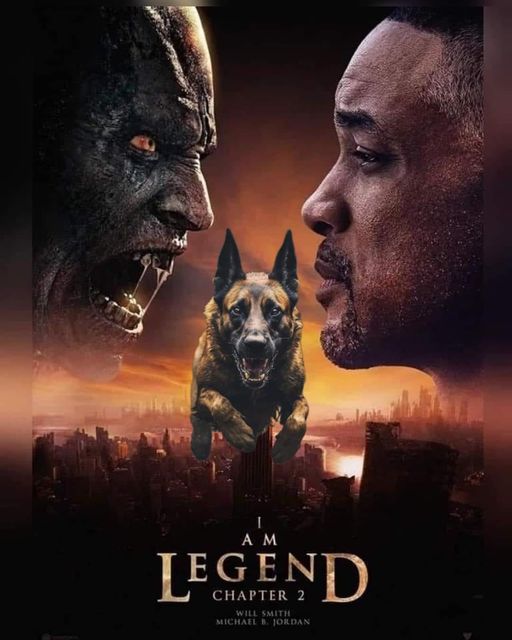
“All Quiet on the Western Front,” is a poignant and harrowing depiction of World War I from the perspective of young German soldiers.
In the early summer of 1916, the world was engulfed in the fires of the Great War. For Paul Bäumer and his classmates, the idyllic days of youth in a small German town were abruptly replaced by the grim reality of the battlefield. Their dreams and aspirations were buried beneath the mud and blood of the Western Front, where hope was a fleeting visitor.
Chapter 1: The Call to Arms
Paul Bäumer, a bright and sensitive young man, had just turned eighteen when the call to arms resonated through his town. The patriotic fervor swept through the streets, fueled by the impassioned speeches of their schoolmaster, Kantorek. “You are the iron youth,” Kantorek declared, “ready to defend the Fatherland!” Enthusiastic and naive, Paul and his friends—Albert Kropp, Müller, and Leer—volunteered for the army, driven by a sense of duty and camaraderie.
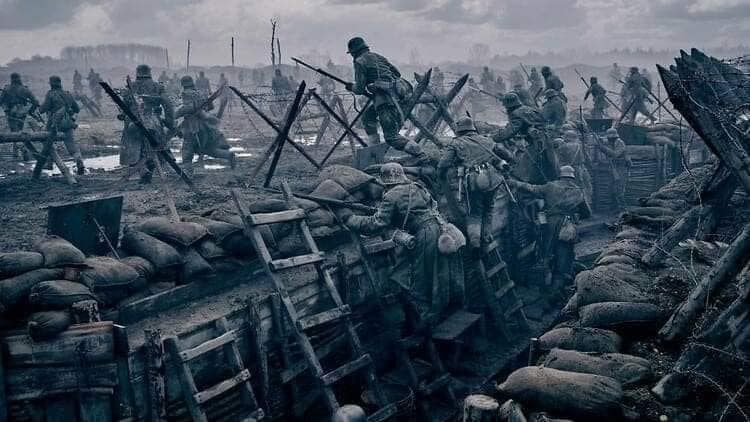
Chapter 2: The Trenches
The harshness of their new reality hit them during basic training under the brutal Corporal Himmelstoss. The once vibrant boys were reduced to automatons, their spirits crushed by the relentless discipline. Yet, nothing could prepare them for the trenches. Arriving at the front, Paul and his comrades were greeted by the cacophony of artillery fire, the stench of decay, and the sight of dismembered bodies strewn across the battlefield.
Chapter 3: Brotherhood
In the midst of chaos, a bond of brotherhood formed among the soldiers. Katczinsky, an older, resourceful soldier, took Paul under his wing. Kat’s ingenuity in finding food and his philosophical outlook on life provided a semblance of normalcy amidst the horror. The soldiers shared everything—food, stories, fears—creating a family forged in the crucible of war.
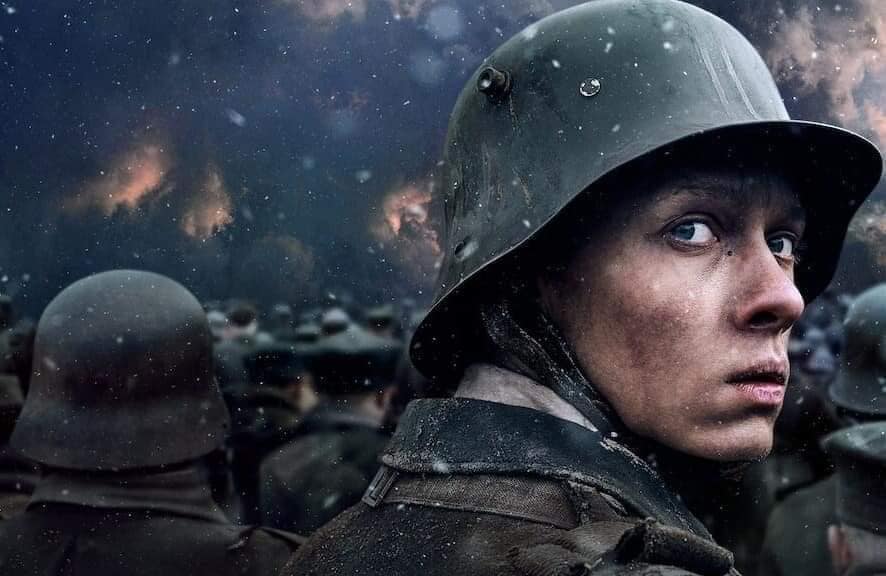
Chapter 4: The Horror of War
The days blurred into nights as the incessant bombardment and constant threat of death eroded their sanity. Paul witnessed the gruesome realities of war—friends killed by shrapnel, men driven mad by the incessant shelling, and the agonizing cries of the wounded. He grappled with the futility of their sacrifice and the senselessness of the conflict. In one harrowing moment, Paul killed a French soldier in a shell hole and, as he watched the life drain from his enemy’s eyes, he realized the shared humanity that transcended the lines of battle.
Chapter 5: The Return Home
Granted a brief leave, Paul returned to his hometown, only to find himself a stranger in a place that once was home. The townsfolk, untouched by the horrors of the front, spoke of patriotism and honor, unable to comprehend the trauma etched into his soul. The disconnect between the front and home deepened his sense of isolation.


“Apollo 13” (1995) is a historical drama film directed by Ron Howard, based on the true story of the ill-fated Apollo 13 lunar mission.
“Apollo 13,” directed by Ron Howard and released in 1995, is a gripping historical drama that chronicles the harrowing and heroic story of NASA’s Apollo 13 lunar mission. The film is based on real events that took place in April 1970 when an oxygen tank explosion aboard the spacecraft jeopardized the lives of three astronauts and the mission itself. Through expert direction, powerful performances, and meticulous attention to detail, “Apollo 13” captures the tension, teamwork, and triumph of human spirit in the face of disaster.
Chapter 1: The Launch
The film opens with the excitement and anticipation surrounding the Apollo 13 mission. Jim Lovell (Tom Hanks), the mission commander, along with his crew members Fred Haise (Bill Paxton) and Jack Swigert (Kevin Bacon), prepare for what is supposed to be NASA’s third lunar landing. The launch on April 11, 1970, is flawless, and the spacecraft enters a perfect trajectory towards the moon.

Chapter 2: “Houston, We Have a Problem”
The mood shifts dramatically when, two days into the mission, an oxygen tank explodes, crippling the spacecraft. The famous line, “Houston, we have a problem,” echoes the gravity of the situation as the crew reports the explosion to Mission Control. The explosion not only endangers the crew’s lives but also derails the mission’s primary objective of landing on the moon.

Chapter 3: The Fight for Survival
With the lunar landing now impossible, the focus shifts to bringing the astronauts home safely. The damaged spacecraft loses oxygen, power, and cabin heat, forcing the crew to shut down the command module and use the lunar module as a lifeboat. The film vividly portrays the ingenuity and determination of both the astronauts and the NASA engineers on the ground as they work against the clock to devise a plan for a safe return.
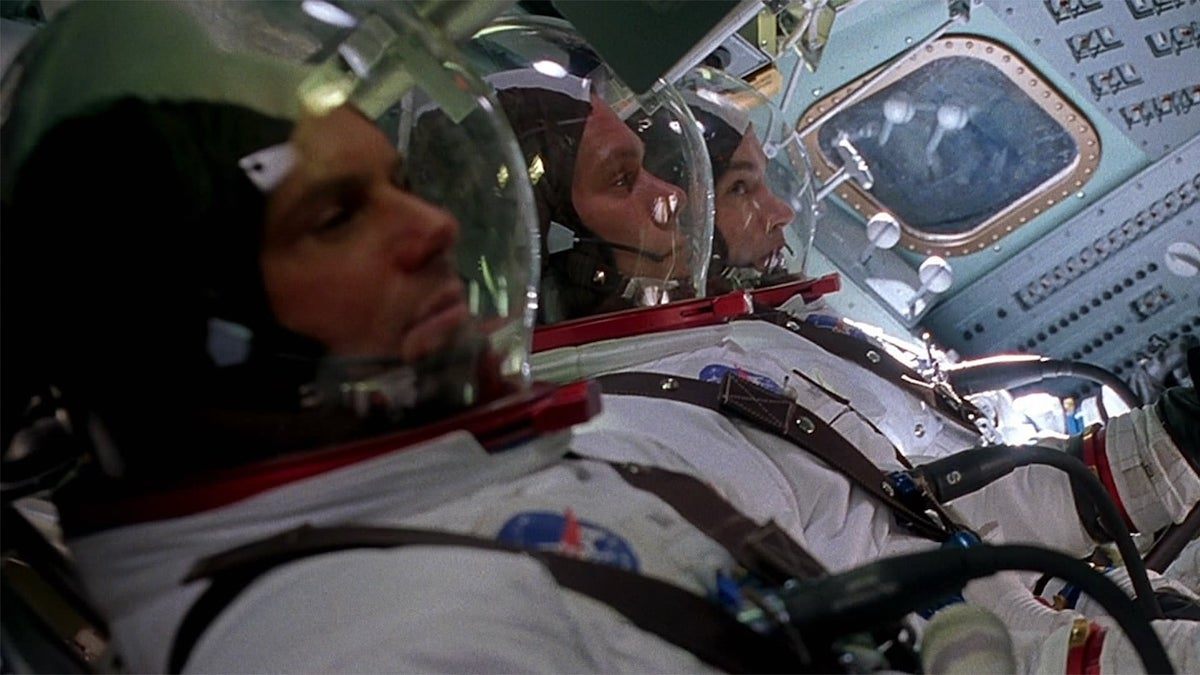
Chapter 4: Ingenious Solutions
The film highlights the resourcefulness of the NASA team, led by Flight Director Gene Kranz (Ed Harris). Faced with the challenge of limited resources and time, the team comes up with innovative solutions to conserve power, manage carbon dioxide levels, and navigate the spacecraft back to Earth. One of the most iconic scenes shows engineers in Mission Control dumping a box of miscellaneous items on a table, representing what the astronauts have on board, and devising a way to adapt these materials into a makeshift air filter.
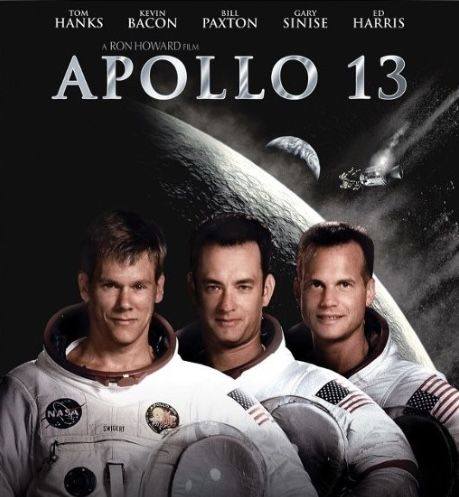
Chapter 5: The Return to Earth
As Apollo 13 approaches Earth, the tension reaches its peak. The astronauts must perform a critical burn of the lunar module’s engine to correct their course. With minimal power and no computer guidance, Lovell manually steers the spacecraft, using the Earth as a reference point. The film builds suspense as the astronauts re-enter the Earth’s atmosphere, enduring a prolonged and nerve-wracking radio blackout.
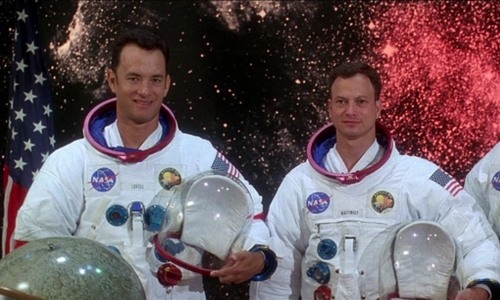
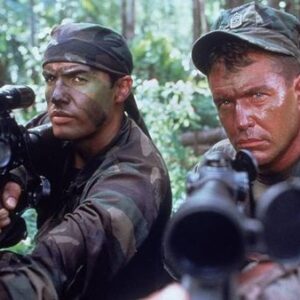
“Sniper,” directed by Luis Llosa and released in 1993, stands as a gripping and intense thriller that explores the psychological and tactical challenges of sniper warfare.
The film “Sniper,” directed by Luis Llosa and released in 1993, stands as a gripping and intense thriller that explores the psychological and tactical challenges of sniper warfare. This story takes viewers deep into the dense, unforgiving jungles of Panama, where the line between hunter and hunted blurs with each passing moment.

Plot Synopsis:
Act 1: Mission Briefing
The story begins with Thomas Beckett (Tom Berenger), a seasoned and stoic Marine sniper, being assigned a high-stakes mission. Beckett, who has spent years in the treacherous terrains of various battlefields, is tasked with eliminating a powerful Panamanian drug lord. To assist him, the military assigns Richard Miller (Billy Zane), a sharp-shooting but inexperienced SWAT officer who is new to the world of jungle warfare.
Act 2: Into the Jungle
As Beckett and Miller infiltrate the dense jungle, the film delves into the intricate preparation and strategy required for a successful sniper mission. The jungle itself becomes a character, with its thick foliage, oppressive humidity, and the constant buzz of unseen dangers. Beckett, the hardened veteran, finds himself constantly at odds with Miller, whose inexperience and naivety become apparent. The tension between the two escalates, highlighting their contrasting approaches to the mission and their perspectives on warfare.
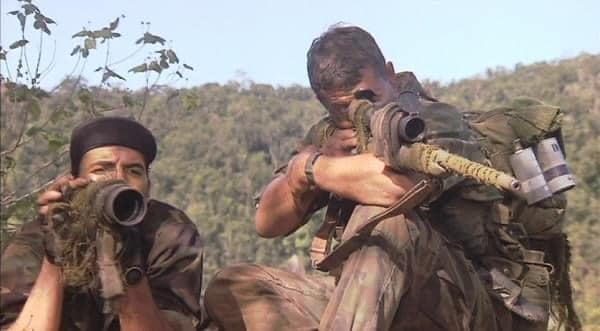
Act 3: The Hunter Becomes the Hunted
The mission takes a dire turn when Beckett and Miller discover they are being hunted by a skilled enemy sniper. The jungle, once their cover, becomes a lethal maze where every rustle and shadow could signal death. Beckett’s experience and Miller’s sharpshooting skills are put to the ultimate test as they engage in a deadly game of cat and mouse with the unseen sniper. The psychological strain mounts as the lines between predator and prey blur, and trust between the two protagonists is stretched to its limit.
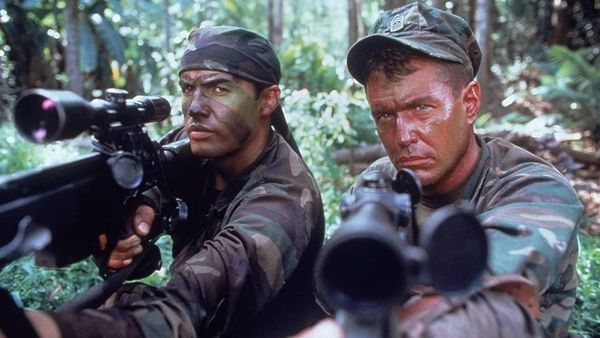
Act 4: Final Showdown
In a heart-pounding climax, Beckett and Miller are cornered by their adversary. The final showdown is a masterclass in tension and strategy, with each shot echoing through the jungle. The culmination of their journey is not just a physical battle but a test of wills and survival instincts. As they confront the enemy sniper, both Beckett and Miller are pushed to their limits, revealing their deepest fears and strengths.
Act 5: Aftermath and Reflection
The mission ends with a bittersweet victory. The enemy is defeated, but the cost is high. The experience leaves an indelible mark on both men. Beckett, the grizzled veteran, gains a renewed sense of purpose, while Miller, the novice, emerges as a more seasoned and hardened soldier. The film closes with a poignant reflection on the nature of warfare and the scars it leaves behind, both visible and invisible.
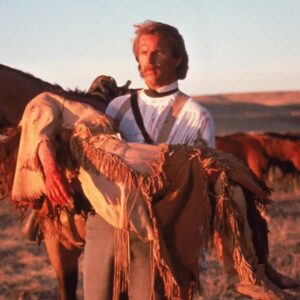
“Dances With Wolves” is a 1990 American epic Western film directed by Kevin Costner, who also stars in the lead role.
The 1990 American epic Western film “Dances With Wolves,” directed by Kevin Costner, who also stars in the lead role, is a poignant and sweeping tale of cultural discovery, transformation, and the deep bonds that can form between seemingly disparate peoples. The film is an adaptation of Michael Blake’s 1988 novel of the same name and takes viewers on a journey through the American frontier during the Civil War era.
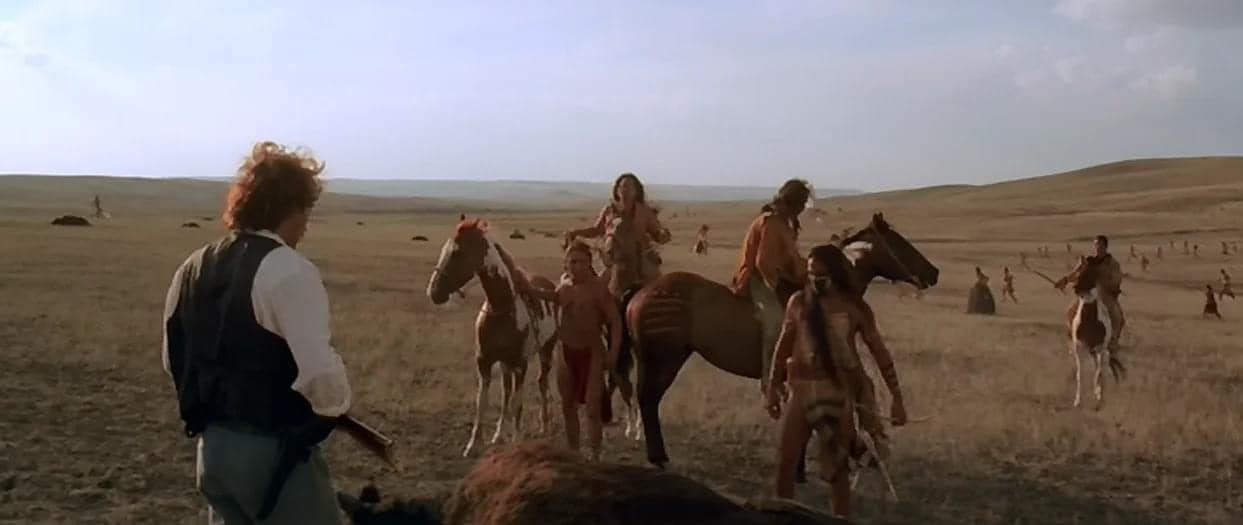
Plot Synopsis:
Act 1: A Soldier’s Journey
The story begins with Lieutenant John J. Dunbar (Kevin Costner), a disillusioned Union Army officer who inadvertently becomes a hero during a suicidal act of bravery in the Civil War. Wishing to see the Western frontier before it disappears, Dunbar requests a transfer to the westernmost outpost, Fort Sedgewick. Upon arrival, he finds the fort deserted and in disrepair, and he decides to restore it, living in solitude with only his horse, Cisco, and a curious wolf he names Two Socks.
Act 2: First Encounters
Dunbar’s solitary existence is soon interrupted by encounters with the local Sioux tribe. Initially wary of each other, Dunbar’s kindness and curiosity about the Sioux culture gradually earn him their trust. He befriends Kicking Bird (Graham Greene), a wise and cautious medicine man, and Wind In His Hair (Rodney A. Grant), a fierce warrior who becomes his friend. Dunbar also meets Stands With A Fist (Mary McDonnell), a white woman adopted by the Sioux after her family was killed, who helps bridge the language gap between him and the tribe.
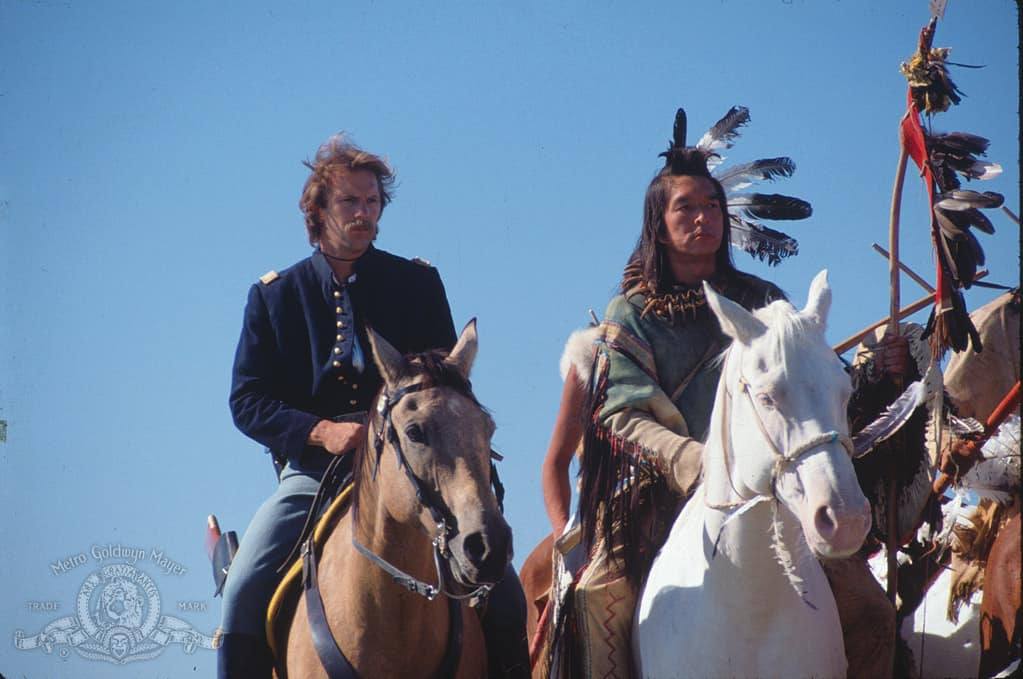
Act 3: Cultural Integration
As Dunbar spends more time with the Sioux, he becomes deeply immersed in their way of life. He learns their language, participates in their hunts, and falls in love with Stands With A Fist. The Sioux, in turn, come to respect and accept him, bestowing upon him the name “Dances With Wolves” after witnessing him play with Two Socks. Dunbar’s transformation from a soldier of the Union to a member of the Sioux tribe symbolizes his complete cultural assimilation and the shedding of his former identity.
Act 4: Conflict and Loyalty
The tranquility of Dunbar’s new life is threatened when Union soldiers arrive at Fort Sedgewick, discovering his abandoned journal that documents his experiences with the Sioux. Dunbar is captured and accused of treason, but the Sioux rescue him in a daring raid. This act solidifies Dunbar’s loyalty to his new family, but he realizes that his presence endangers the tribe. Understanding the imminent threat posed by the encroaching settlers and soldiers, Dunbar decides to leave the Sioux to protect them, despite his deep emotional bonds.
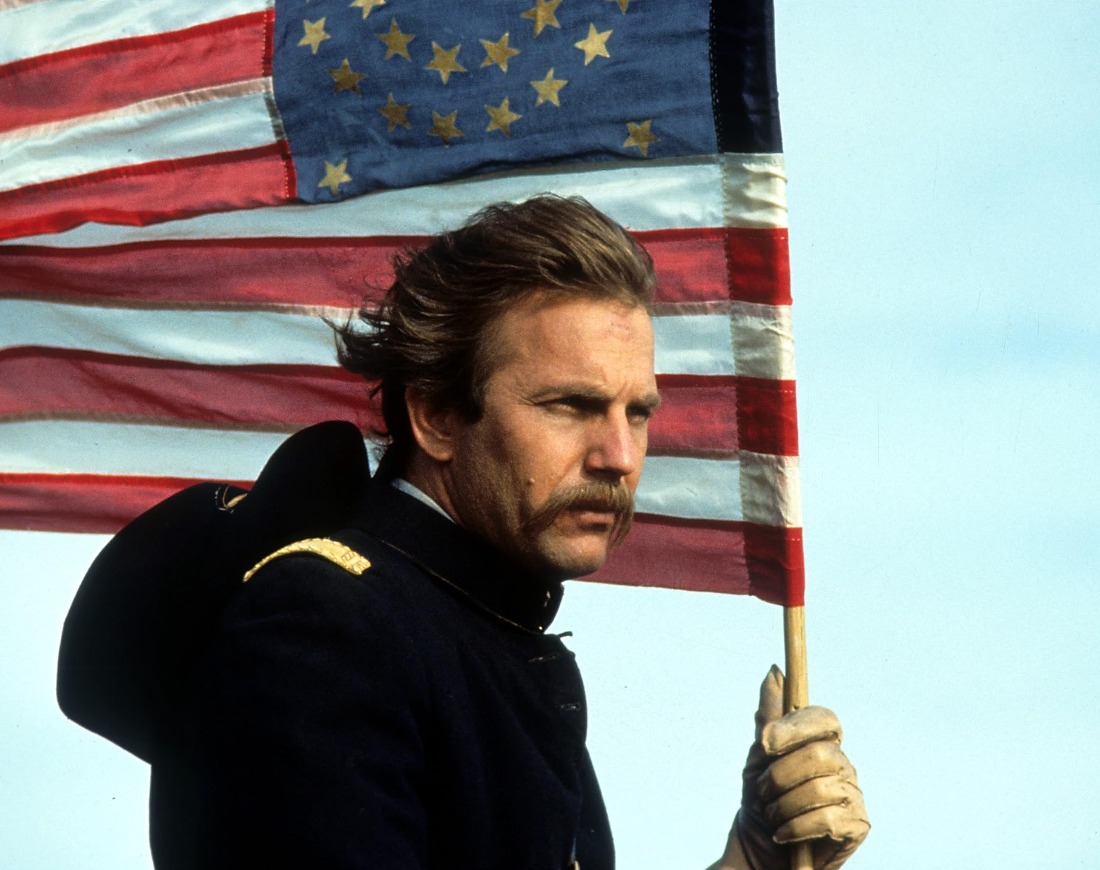
Act 5: A Bittersweet Farewell
The film concludes with a poignant farewell between Dunbar and his Sioux friends. Dunbar and Stands With A Fist leave the tribe, hoping to draw the soldiers away. The final scenes show Wind In His Hair shouting his friendship and sorrow from a distant cliff, a haunting reminder of the enduring bond they share. The closing narration reflects on the fate of the Native American tribes, evoking a sense of loss and nostalgia for a vanishing way of life.
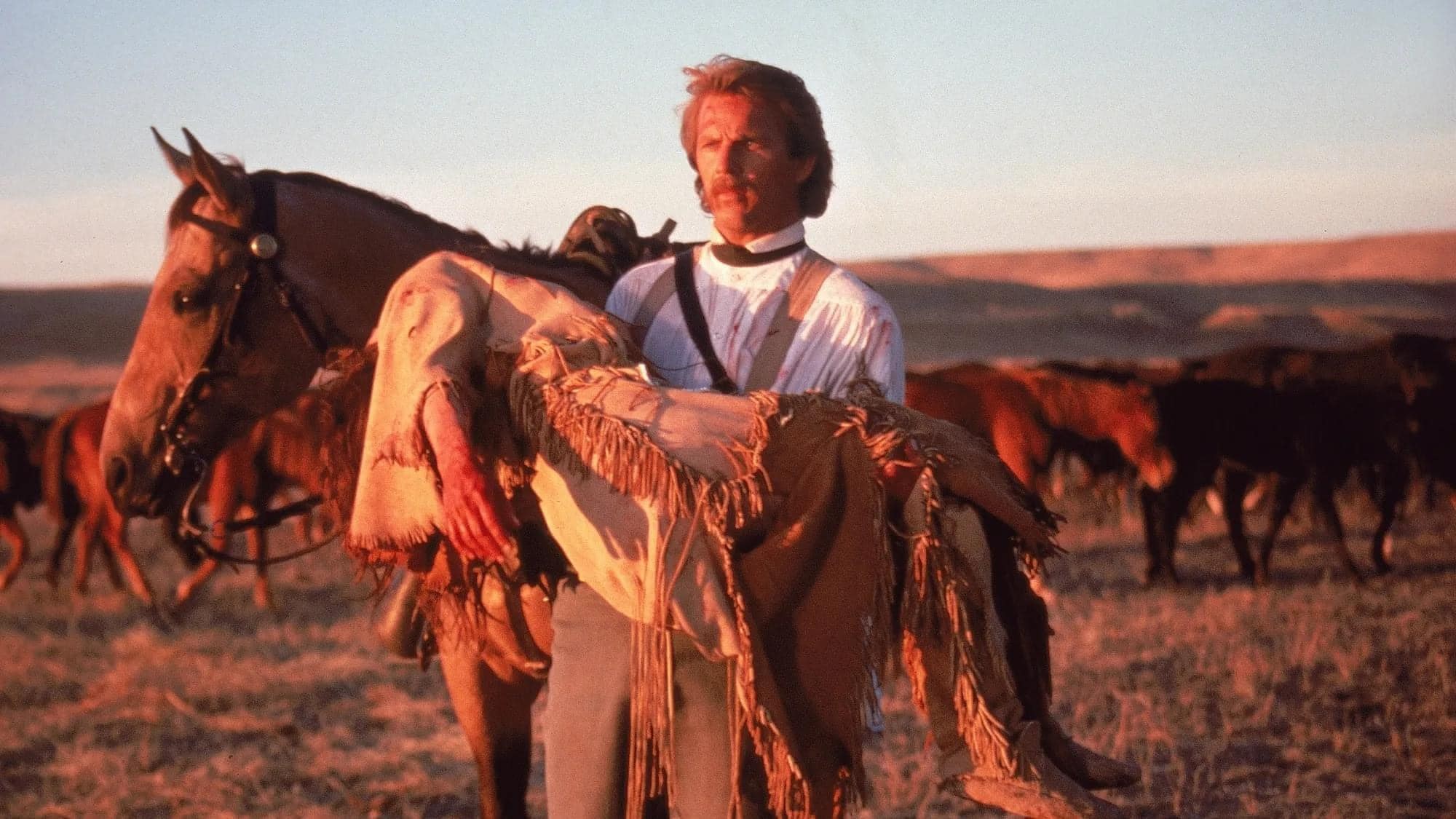
Themes and Analysis:
“Dances With Wolves” explores themes of cultural understanding, the clash between civilizations, and the personal transformation that comes from empathy and immersion in a different way of life. The film is a critique of the destructive impact of Western expansion on Native American cultures and an homage to the resilience and richness of those cultures.

Kevin Costner’s direction and performance bring a heartfelt and authentic portrayal of John Dunbar’s journey from isolation to integration, highlighting the importance of cross-cultural relationships. The cinematography captures the breathtaking beauty of the American frontier, contrasting it with the harsh realities of frontier life and conflict.
The film’s success lies in its ability to humanize both sides of the cultural divide, offering a nuanced perspective on a complex period in American history. “Dances With Wolves” remains a powerful narrative about the possibility of understanding and harmony between different cultures, even in the face of inevitable change.
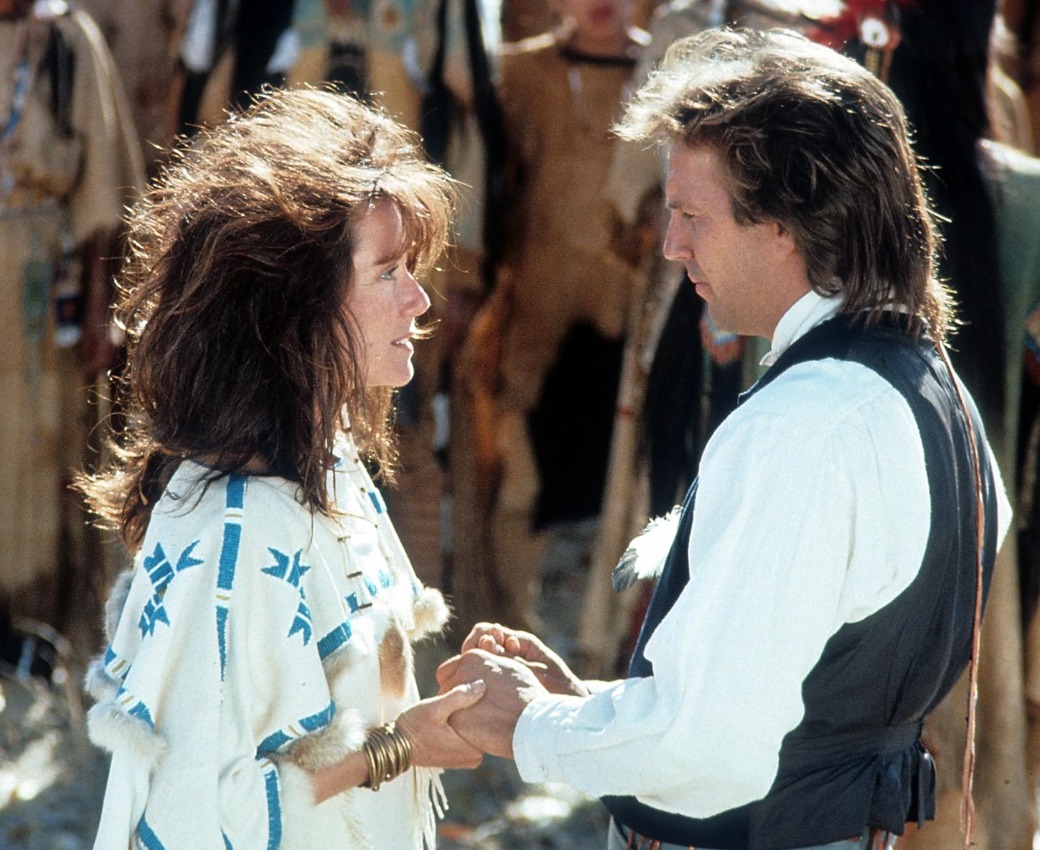
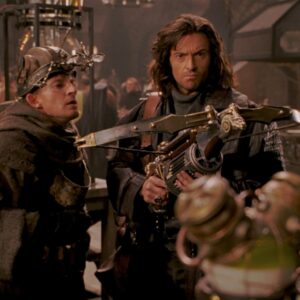
“Van Helsing” (2004) is a dark fantasy action-adventure film directed by Stephen Sommers.
“Van Helsing,” directed by Stephen Sommers and released in 2004, is a dark fantasy action-adventure film that brings the legendary monster hunter to the big screen in an epic tale of gothic horror and thrilling escapades. Set in the late 19th century, the film follows Gabriel Van Helsing (Hugh Jackman) on a perilous mission to rid the world of monstrous threats, blending classic horror elements with high-octane action.
Plot Synopsis:
Act 1: The Hunter’s Call
The film opens with Gabriel Van Helsing, a mysterious and tormented monster hunter employed by a secret order known as the Knights of the Holy Order. Haunted by fragmented memories of his past, Van Helsing is dispatched to Transylvania with a new mission: to destroy Count Dracula (Richard Roxburgh), the ancient vampire lord whose reign of terror threatens humanity. Accompanied by Carl (David Wenham), a friar and inventive gadgeteer, Van Helsing sets out to confront the dark forces lurking in the Carpathian Mountains.
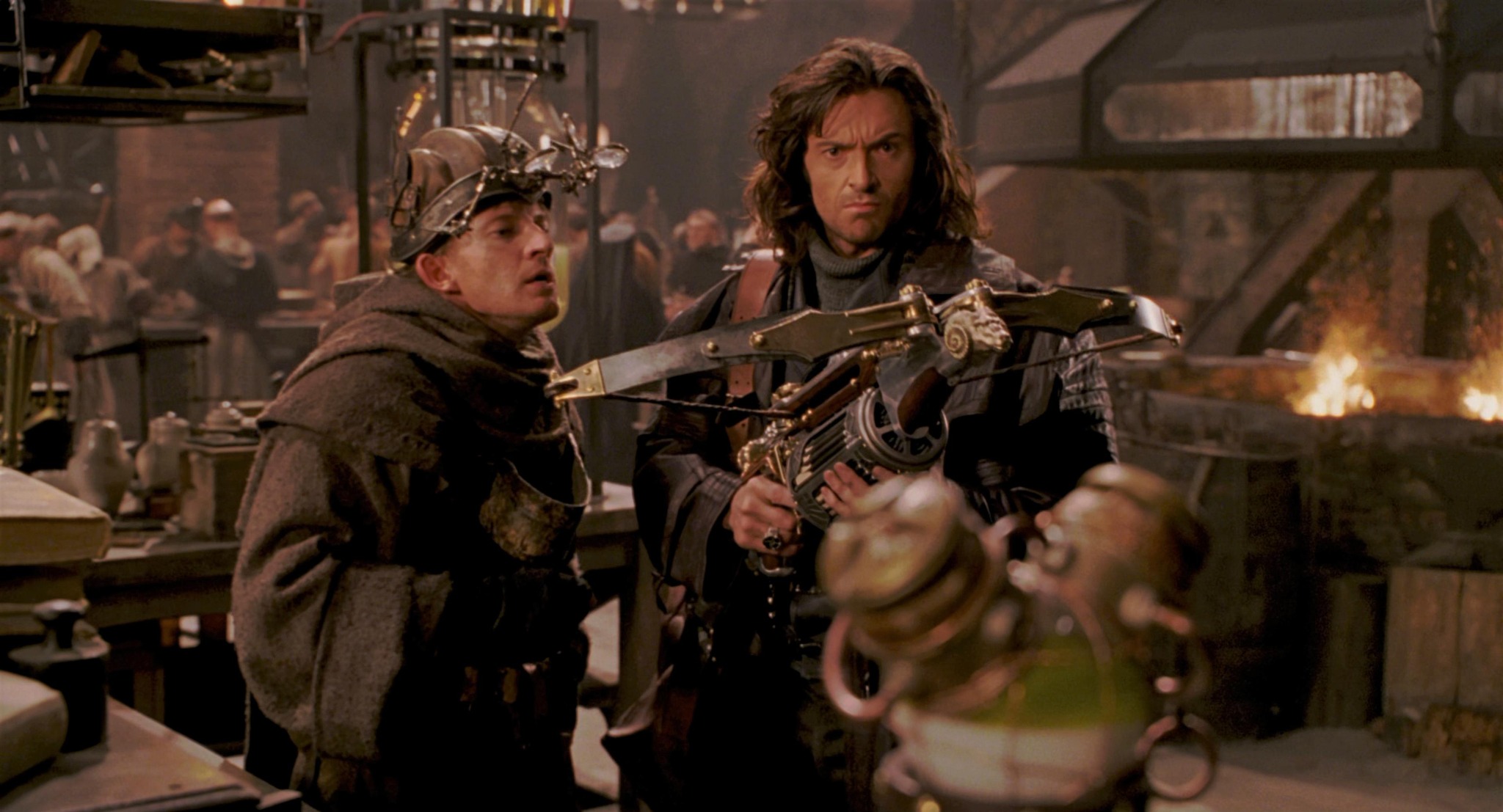
Act 2: Allies and Adversaries
Upon arriving in Transylvania, Van Helsing meets Anna Valerious (Kate Beckinsale), the last descendant of a noble family cursed to remain in purgatory until Dracula is vanquished. Anna, a skilled warrior determined to end her family’s curse, reluctantly joins forces with Van Helsing. Together, they face an array of supernatural adversaries, including Dracula’s deadly brides and the monstrous Frankenstein’s creature (Shuler Hensley), who holds crucial information about Dracula’s plans.
Act 3: Unraveling the Mystery
As Van Helsing and Anna delve deeper into Dracula’s sinister plot, they uncover a horrifying secret: Dracula intends to use the life force of Frankenstein’s creature to bring his undead offspring to life and create an unstoppable army. The race against time intensifies as they navigate treacherous terrain, ancient castles, and cryptic clues. Van Helsing’s fragmented memories begin to surface, revealing his true identity and connection to Dracula, adding a personal stake to his mission.

Act 4: Clash of Titans
In a climactic showdown, Van Helsing and Anna infiltrate Dracula’s lair. They face off against the vampire lord and his minions in a series of intense and visually stunning battles. Van Helsing transforms into a werewolf, the only creature capable of killing Dracula, but at the risk of losing his humanity. The final confrontation is a visceral and emotional struggle, culminating in a spectacular and heart-wrenching climax.
Act 5: Sacrifice and Redemption
In the aftermath of the battle, Van Helsing and Anna manage to defeat Dracula and thwart his plans, but not without a cost. Anna sacrifices herself to save Van Helsing, fulfilling her family’s destiny and lifting the curse. With Dracula’s death, Van Helsing is freed from his monstrous transformation, but he is left to grapple with the loss of Anna and the burden of his memories.
The film concludes with Van Helsing and Carl departing Transylvania, their mission accomplished but their hearts heavy. Van Helsing’s journey continues, a solitary figure dedicated to protecting humanity from the darkness that lurks in the shadows.
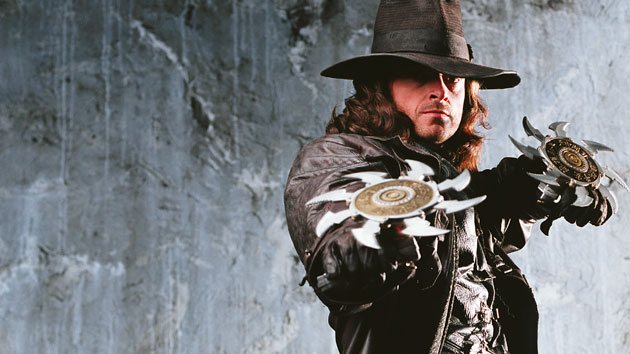
Themes and Analysis:
“Van Helsing” is a dark fantasy adventure that combines classic monster lore with modern action cinema. The film explores themes of redemption, sacrifice, and the eternal battle between good and evil. Van Helsing’s character embodies the tortured hero, driven by a quest for atonement and the search for his true identity.
Stephen Sommers’ direction infuses the film with a gothic atmosphere and relentless energy, creating a visually rich and fast-paced narrative. The blend of horror and action, along with elaborate set pieces and special effects, makes “Van Helsing” a thrilling cinematic experience.
While the film pays homage to classic horror icons like Dracula, Frankenstein, and the Wolfman, it reimagines their stories in a larger-than-life adventure, emphasizing the heroics and humanity of Van Helsing. “Van Helsing” remains a memorable entry in the dark fantasy genre, offering a unique and exhilarating take on timeless tales of terror.

Predator,” released in 1987 and directed by John McTiernan, is a seminal science fiction action film
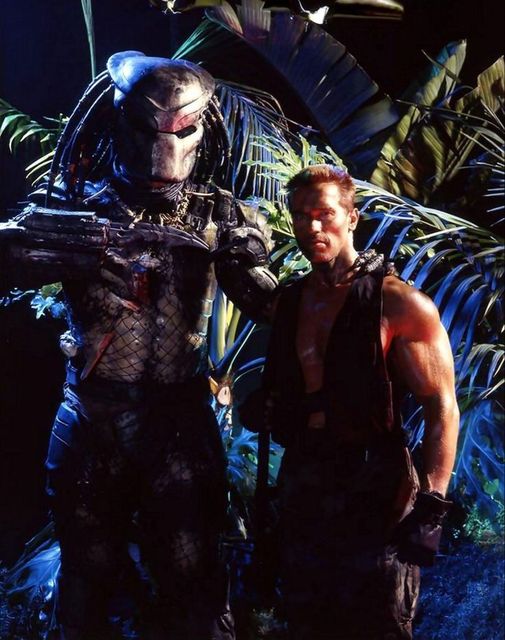

Drawn from interviews with survivors of Easy Company, as well as their journals and letters, Band of Brothers chronicles the experiences of these men
“Band of Brothers,” drawn from interviews with survivors of Easy Company, as well as their journals and letters, chronicles the harrowing and heroic experiences of the men who served in this famed World War II paratrooper unit. The series, created by Steven Spielberg and Tom Hanks and based on the non-fiction book by Stephen E. Ambrose, provides an intimate and deeply moving portrayal of the soldiers’ journey from training to the end of the war.
Plot Synopsis:
Act 1: Training and Brotherhood
The story begins at Camp Toccoa, Georgia, where the men of Easy Company undergo rigorous training under the strict command of Captain Herbert Sobel (David Schwimmer). The grueling preparation for combat forges a bond among the soldiers, despite their differing backgrounds. Key figures emerge, including Lieutenant Richard Winters (Damian Lewis), who is respected for his leadership and calm under pressure, and Lieutenant Lewis Nixon (Ron Livingston), Winters’ close friend and confidant.
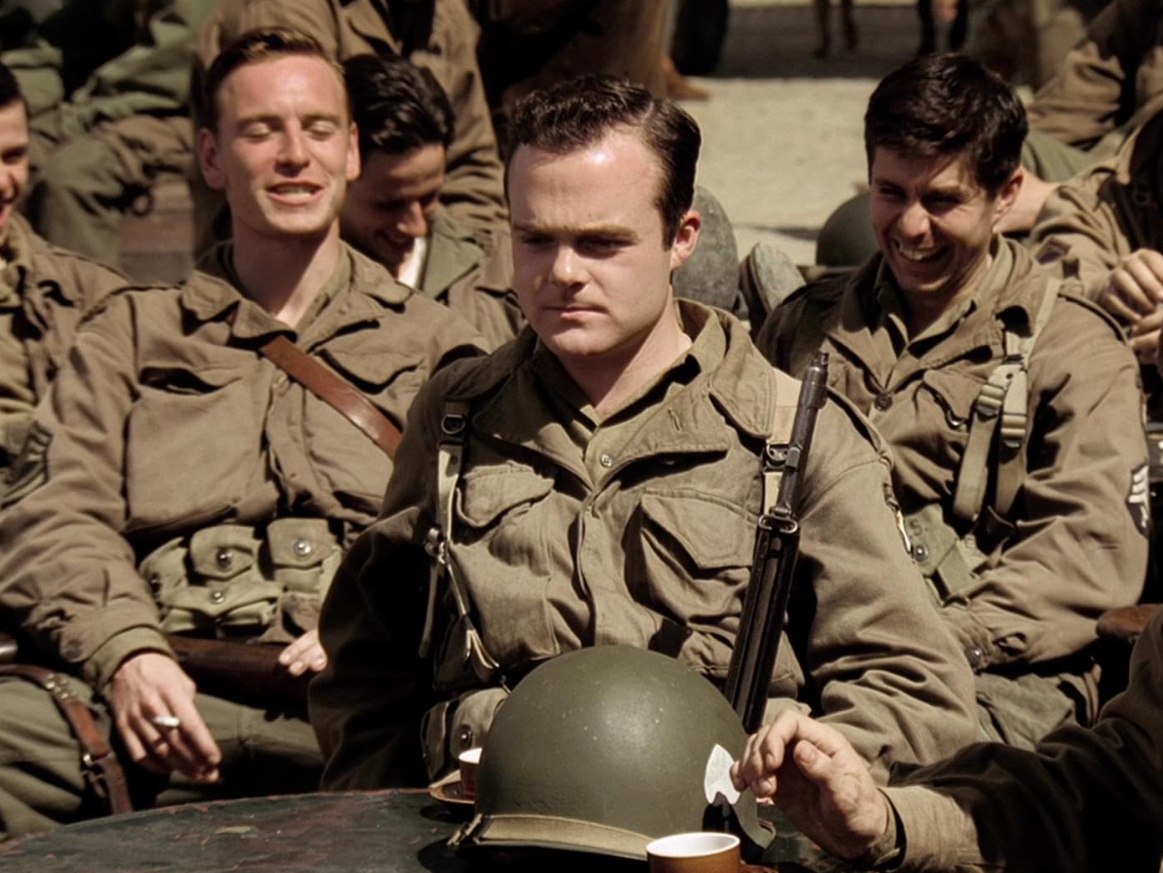
Act 2: D-Day and Initial Combat
Easy Company’s baptism by fire occurs on D-Day, June 6, 1944, when they parachute into Normandy behind enemy lines. The chaos and intensity of their first combat experience are vividly depicted, as the men navigate the brutal realities of war. Their mission is to secure the town of Carentan, and despite heavy casualties and fierce resistance, Easy Company succeeds, showcasing their bravery and tactical prowess.

Act 3: The Liberation of Europe
The series follows Easy Company through significant battles across Europe, including Operation Market Garden in the Netherlands and the bitter winter siege of Bastogne during the Battle of the Bulge. The harsh conditions, scarcity of supplies, and relentless enemy attacks test their endurance and resolve. The soldiers’ camaraderie and unbreakable spirit are highlighted, along with the toll that war takes on their physical and mental well-being.

Act 4: Victory and Aftermath
As the Allies push further into Germany, Easy Company liberates concentration camps and witnesses the horrors of the Holocaust. The men’s reactions to these atrocities underscore the profound impact of the war on their understanding of humanity and justice. With the war nearing its end, Easy Company captures Hitler’s Eagle’s Nest in Bavaria, marking a symbolic victory. The series concludes with the soldiers reflecting on their experiences and the deep bonds they’ve formed.
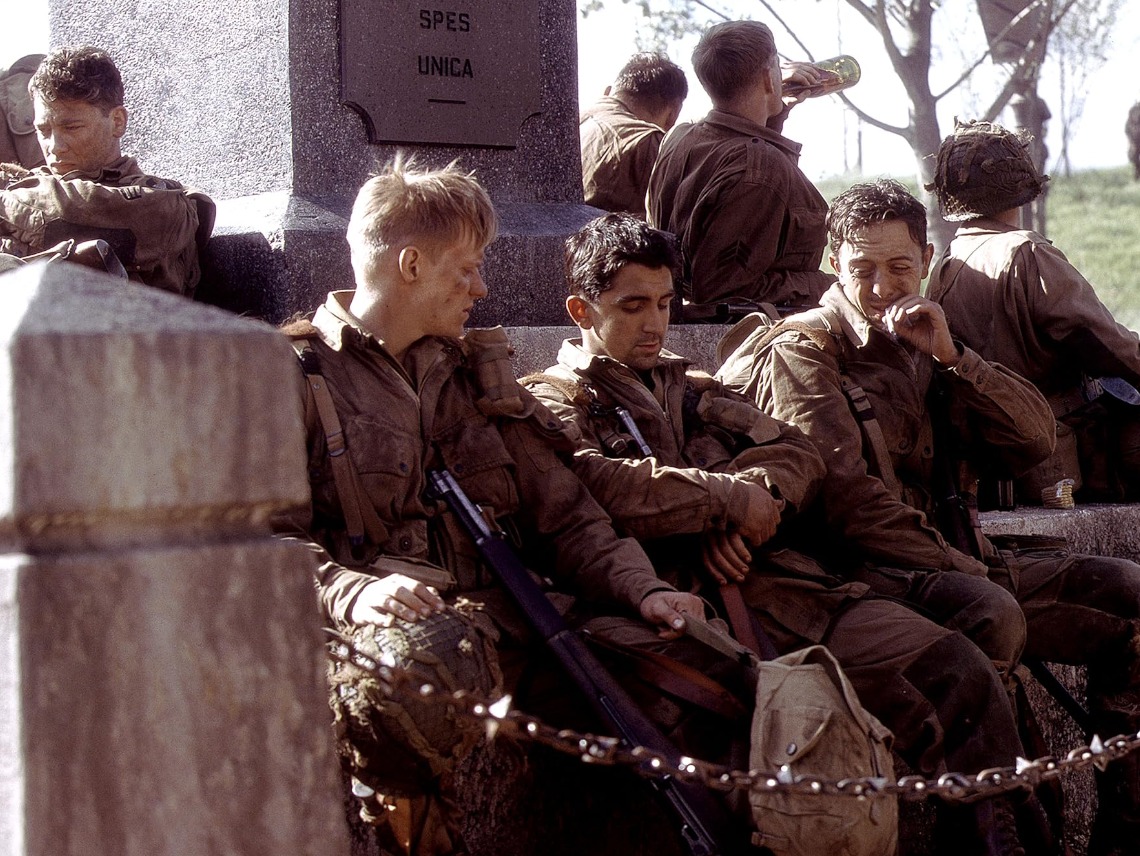
Themes and Analysis:
“Band of Brothers” delves into themes of heroism, sacrifice, and the enduring power of friendship. The series emphasizes the human side of war, portraying the soldiers not just as warriors but as individuals with their own fears, hopes, and dreams. Their letters and journals provide a personal perspective on the historical events, offering insight into their thoughts and emotions.
The portrayal of leadership, particularly through the character of Dick Winters, highlights the qualities of courage, integrity, and empathy. Winters’ evolution from a junior officer to a respected leader reflects the growth and maturity experienced by many soldiers during the war.
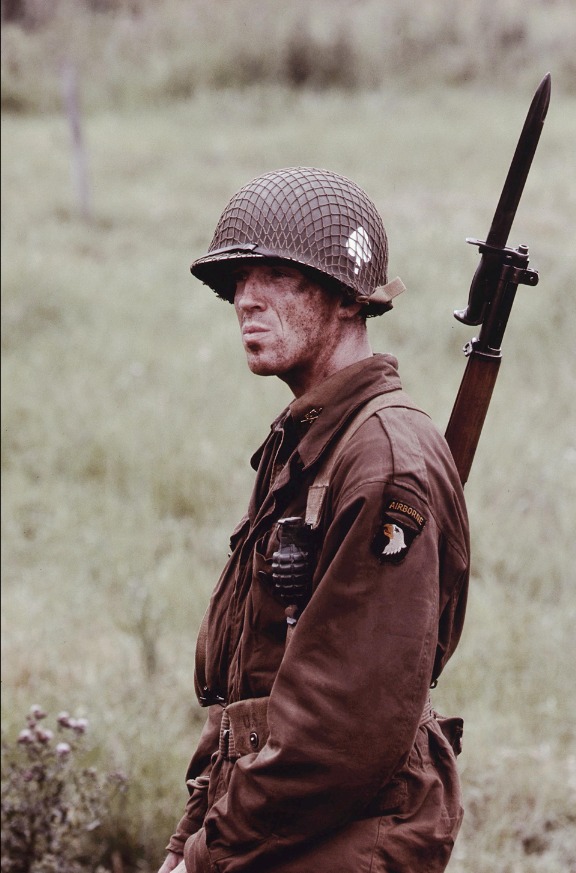
The series also addresses the psychological impact of combat, depicting the struggles with PTSD and the challenges of reintegration into civilian life. The interviews with survivors, woven throughout the narrative, provide authenticity and a poignant reminder of the real lives behind the dramatized events.
“Band of Brothers” stands as a tribute to the men of Easy Company and all who served, capturing the essence of their bravery and the lasting legacy of their sacrifices. It serves as a powerful historical document and a moving testament to the resilience of the human spirit in the face of unimaginable adversity.
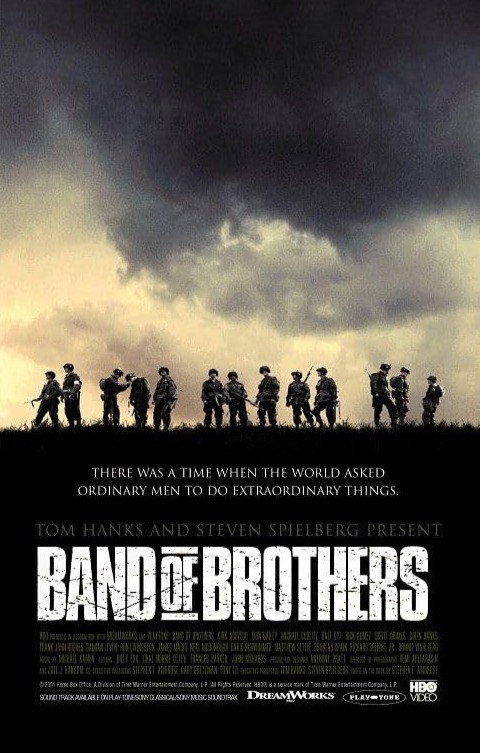

“Silent Hill” is a 2006 supernatural horror film directed by Christophe Gans, based on Konami’s survival horror video game series of the same name.

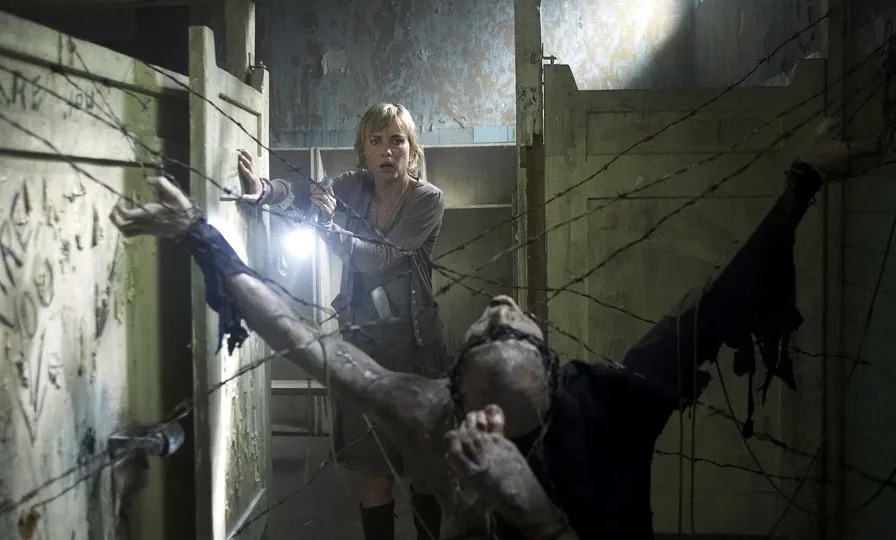
In her search for Sharon, Rose meets Cybil Bennett (Laurie Holden), a tough and compassionate police officer who becomes her reluctant ally. Together, they navigate the town’s twisted landscapes, uncovering the tragic history of Silent Hill. They learn about Alessa Gillespie (also played by Jodelle Ferland), a young girl who was horribly abused and burned by a fanatical cult led by the zealous Dahlia Gillespie (Deborah Kara Unger). Alessa’s pain and suffering have manifested into a powerful force, trapping the town in a perpetual state of limbo.

As Rose delves deeper into the mystery, she encounters various nightmarish entities, including the iconic Pyramid Head, whose presence signifies the town’s judgment and torment. Each encounter brings her closer to understanding the connection between Sharon and Alessa. Rose discovers that Sharon is Alessa’s reincarnation, a manifestation of her innocence and hope.
In a climactic showdown, Rose confronts the cult and the malevolent forces controlling Silent Hill. She uncovers the truth behind Alessa’s suffering and the cult’s twisted beliefs. In a desperate bid to save her daughter, Rose makes a pact with Alessa’s darker side, sacrificing herself to end the town’s curse.
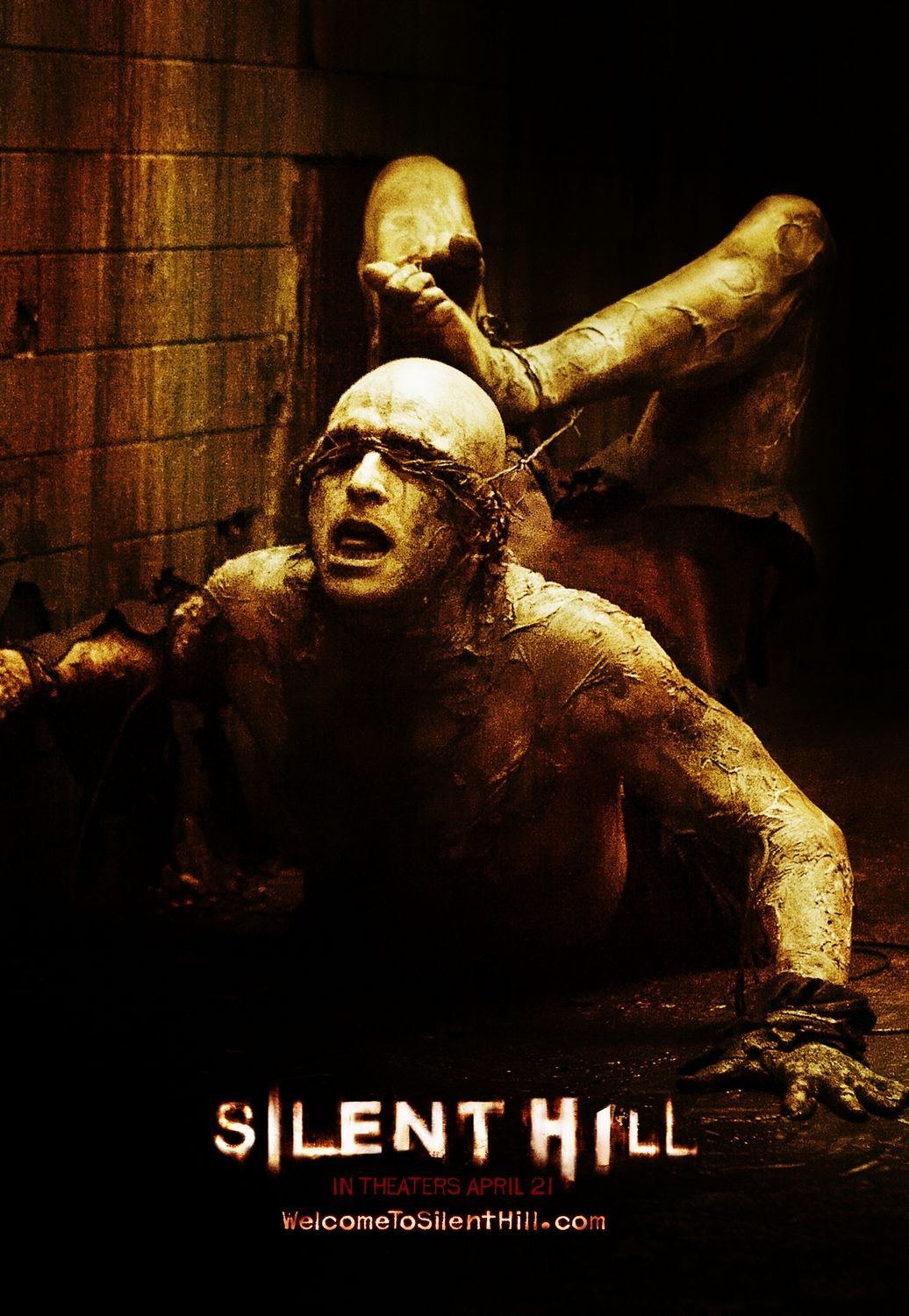
The film concludes with Rose and Sharon escaping Silent Hill, but they remain trapped in a parallel dimension, forever separated from Christopher. The haunting imagery and unresolved ending leave viewers questioning the nature of reality and the true extent of Silent Hill’s power.
“Silent Hill” is a masterful blend of psychological horror and visceral terror, capturing the essence of Konami’s beloved video game series. Christophe Gans’ direction, combined with a compelling storyline and atmospheric visuals, creates a chilling and unforgettable experience that lingers long after the credits roll.

“Apocalypto,” directed by Mel Gibson and released in 2006, stands as a visceral and visually striking epic set in ancient Mesoamerica.
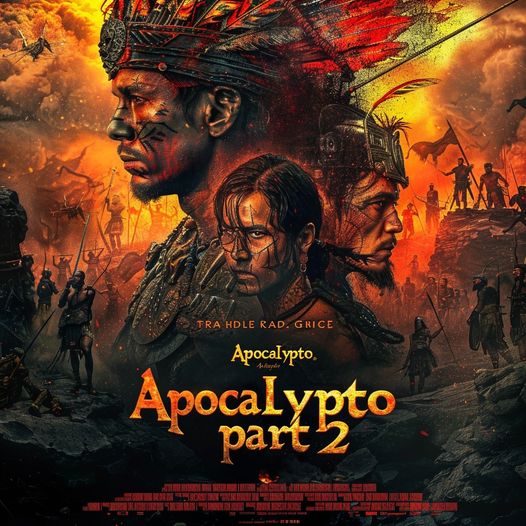
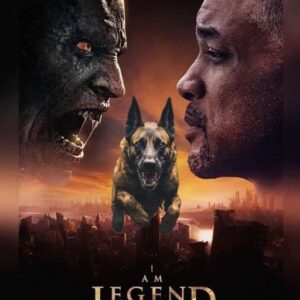
I Am Legend is a 2007 American post-apocalyptic action thriller film loosely based on the 1954 novel of the same name by Richard Matheson.
